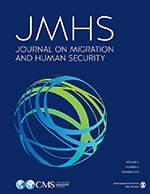Article, Refereed Journal
Journal of Migration and Human Security, vol 6, no 1

The governance of immigration has a checkered past, and policy makers' efforts at reform rarely meet expectations. Critiques have echoed over the years and across the political spectrum. The current system of immigration governance is scattered around the federal government, with no clear chain of command. No single government department or agency captures the breadth of the Immigration and Nationality Act's reach. At the crux of understanding immigration governance is acknowledging that immigration is not a program to be administered; rather, it is a phenomenon to be managed. The abundance of commissions that have studied the issues and the various administrative structures over time offers some wisdom on ingredients for successful governance. Based upon this research, options for effective immigration governance emerge. This paper studies the administration of immigration law and policy with an eye trained on immigration governance for the future. It opens with a historical overview that provides the backdrop for the current state of affairs. It then breaks down the missions and functions of the Immigration and Nationality Act by the lead agencies tasked with these responsibilities. The paper concludes with an analysis of options for improving immigration governance. Each of these options poses unique challenges as well as political obstacles.

